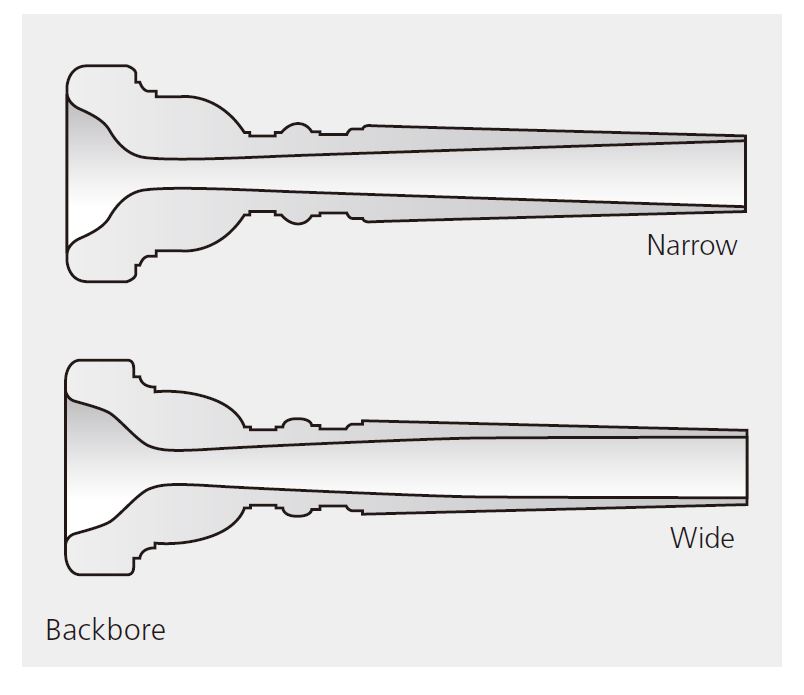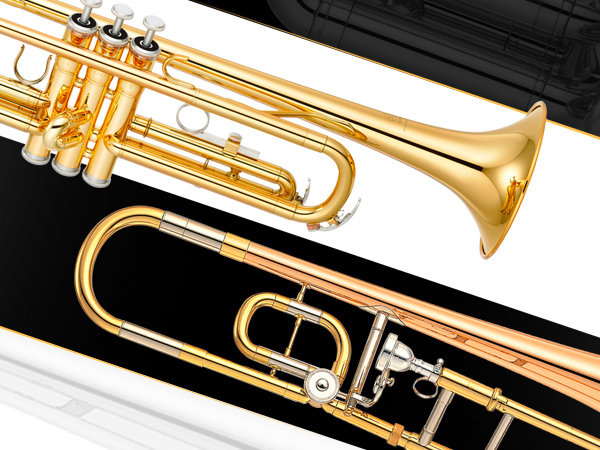Guide to Brass Mouthpieces, Part 3: Throats and Backbores
Hidden inside but critical to the sound.
(This is the third installment in our four-part series about brass mouthpieces.)
In Part 1, we talked about choosing the right mouthpiece for your needs.
In Part 2 we explored the mouthpiece cup and rim, which frequently get the most attention because they are the parts you can easily see and feel. However, the size and shape of the interior of the mouthpiece – the throat and the backbore – also have a huge impact on the way a brass instrument sounds and plays. Let’s take a closer look.
Throat
The throat is the opening at the bottom of the cup and is the narrowest part of the entire mouthpiece. All of the air you blow into your instrument is compressed and funneled through this tiny hole, so it focuses the energy you produce from the vibration of your lips before it moves into the instrument. The diameter and length of this part of the mouthpiece have a major influence on how much resistance you feel while playing. A narrow, long throat creates a lot of resistance which contributes to a fast response, brilliant tone and enhanced playability in the high register. A wide, short throat makes it easier to play low notes and can produce a large volume of sound, but will require more air from the player. If the throat is too large, you may find yourself tiring quickly.
Backbore

The backbore starts where the narrow part of the throat begins to widen. It runs all the way to the end of the mouthpiece, and may be given a complicated shape to help create a specific sound. Like the throat, the diameter and shape of the backbore have a big influence on both the tone produced and the amount of resistance you feel when playing. It’s probably no surprise that a narrower backbore will help with high notes, create a brighter tone and increase the overall resistance, while a more open backbore will make lower notes sound better and yield a darker tone.
Most Yamaha mouthpieces use a standard backbore shape that’s balanced to match the other characteristics of the mouthpiece to produce the appropriate sound. Models that are used for playing in the upper register are built with a tighter backbore to help you reach those high notes. The model numbers for these mouthpieces all end in the letter ‘a’ – for example, the trumpet mouthpiece 14A4a has a shallow cup and a narrow backbore, making it very popular with lead players.
In Part 4, we discuss how the weight of a mouthpiece and the materials it’s made from impact the sound and feel.
Click here to learn more about the extensive lineup of Yamaha mouthpieces.














